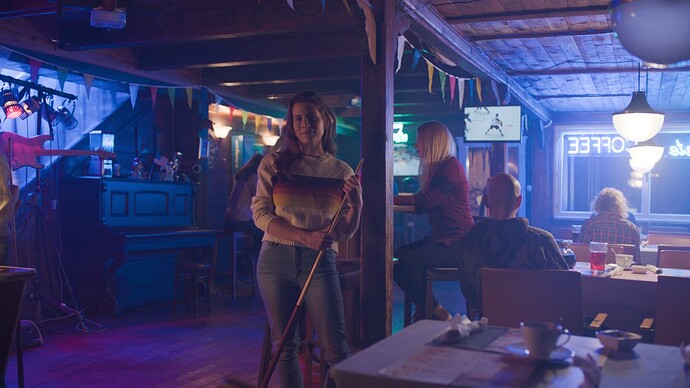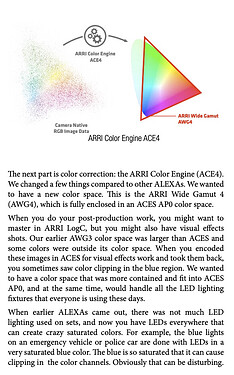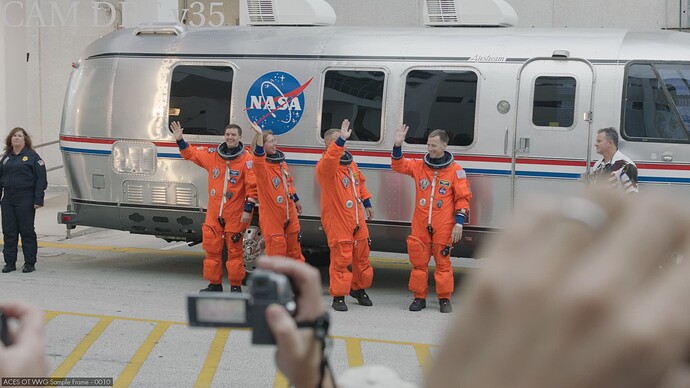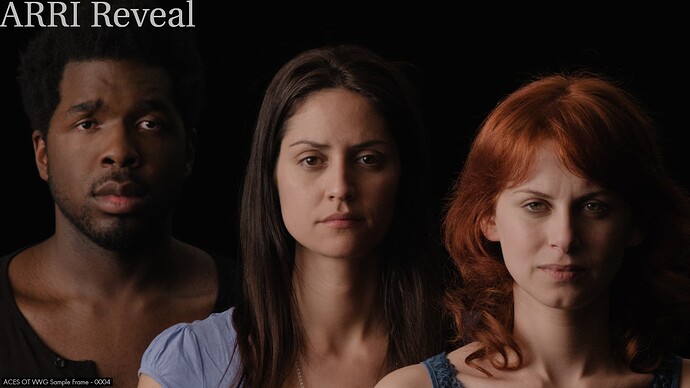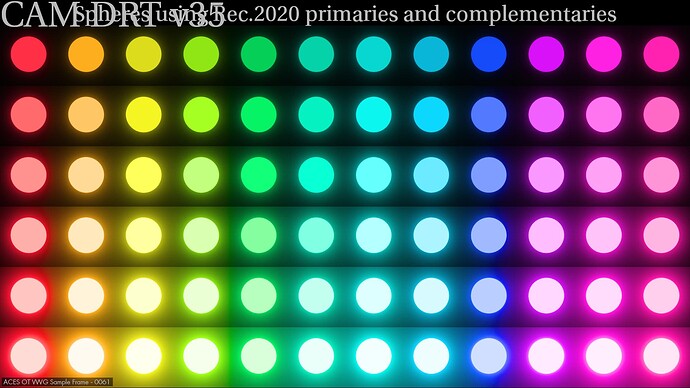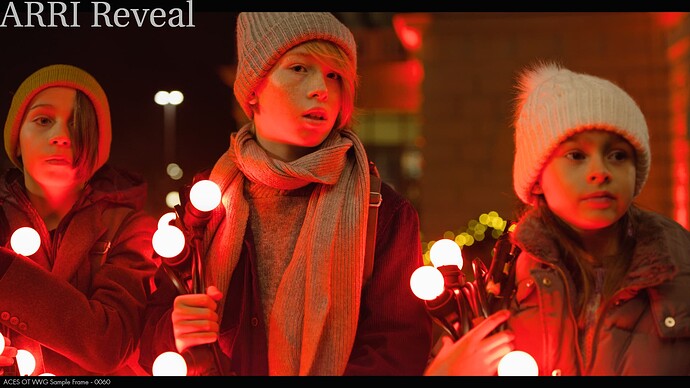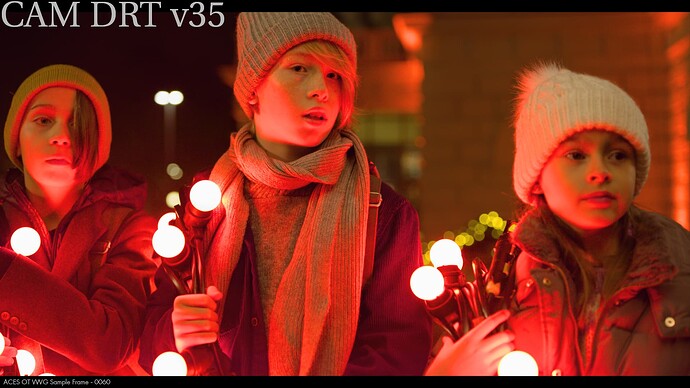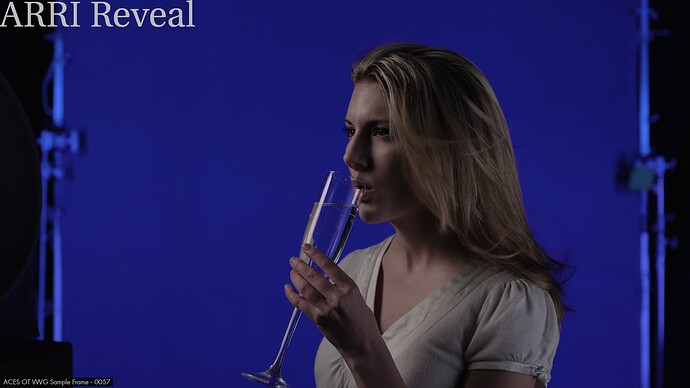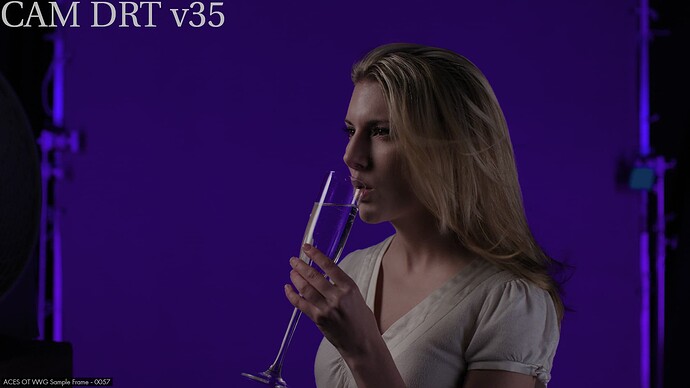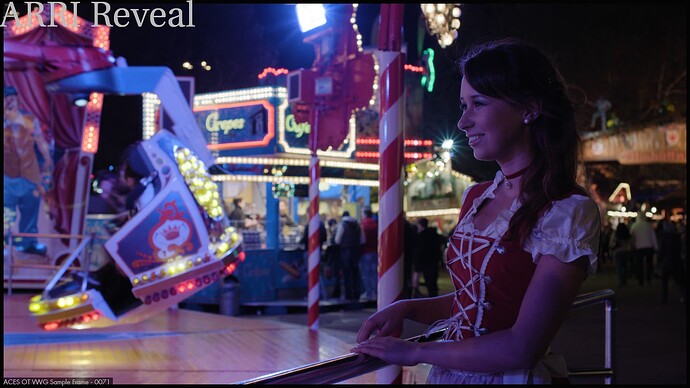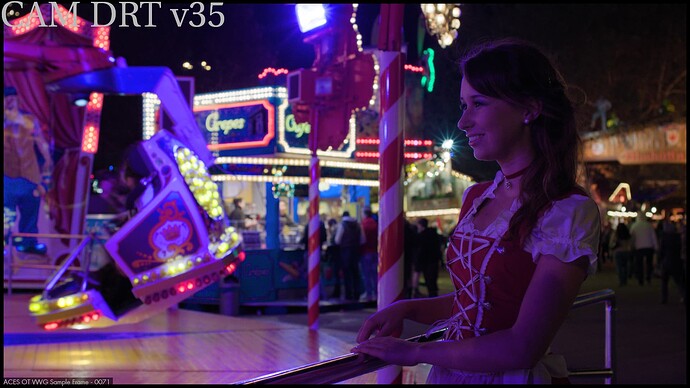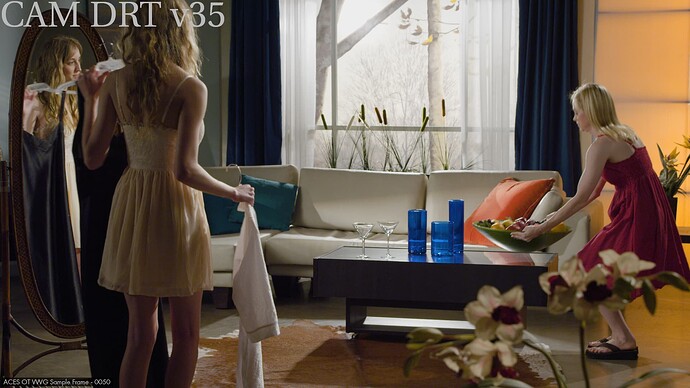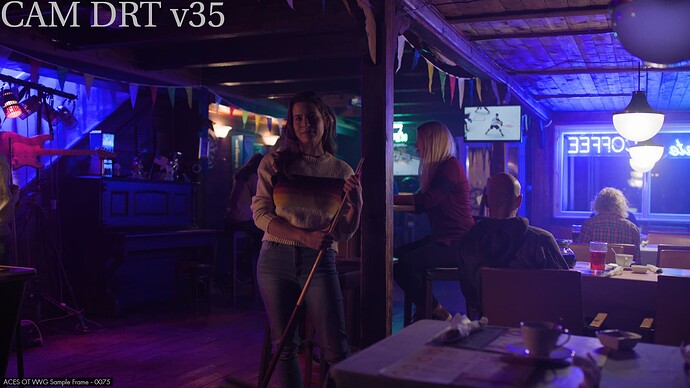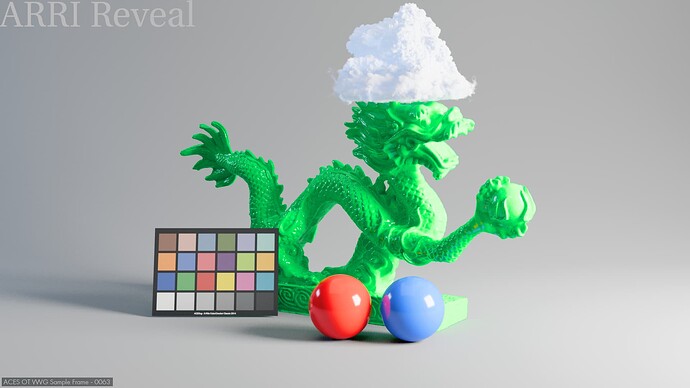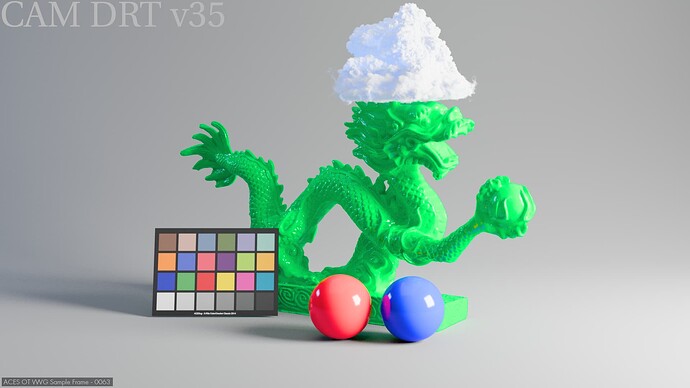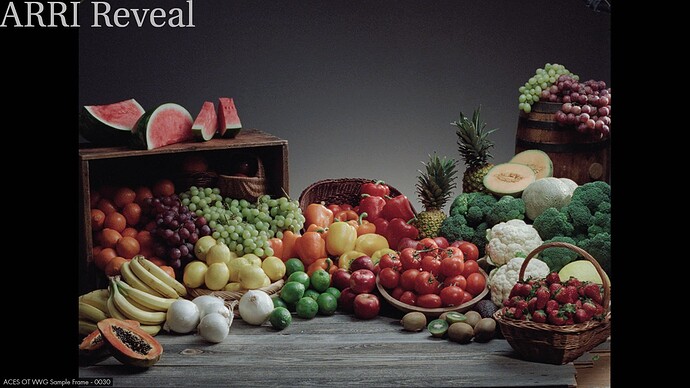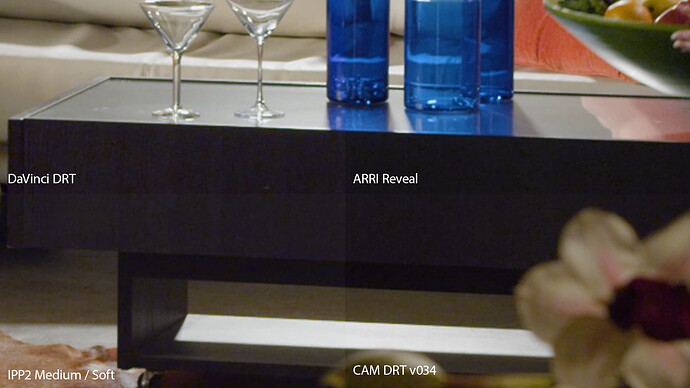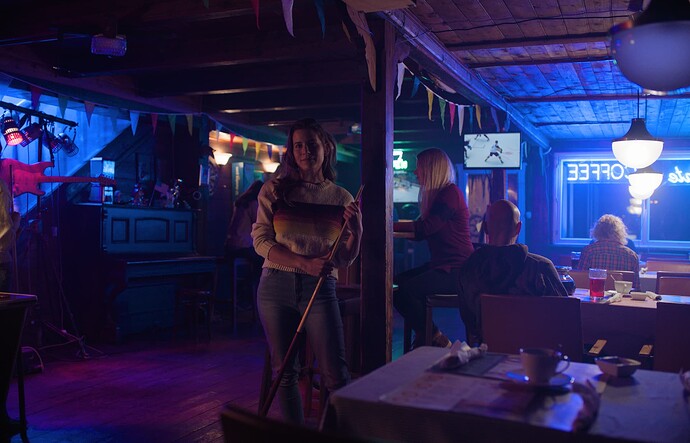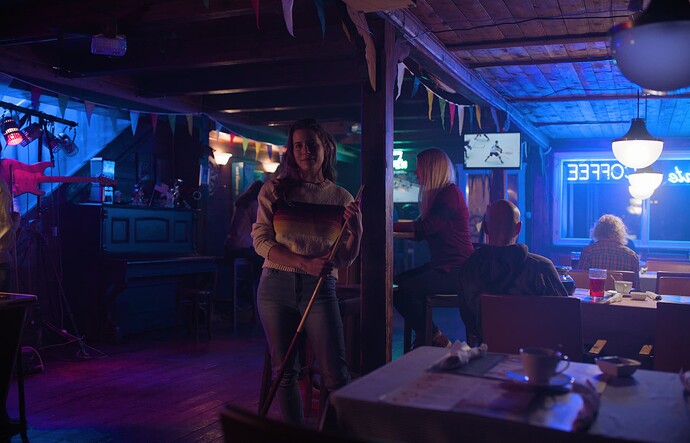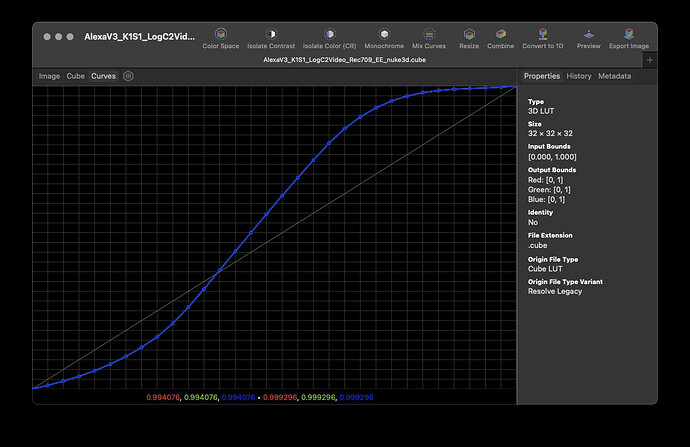Those images look very much lifted and not in the right RGB colourspace. What DRT did you use to produce them?
Hello,
to avoid any confusion, I re-generated the image, encoded for BT.1886 display. And a version also with an LMT so it does not look lifted.
But what I was hoping to discuss are those “kinks” I can see here and there :
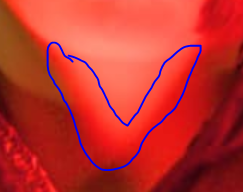
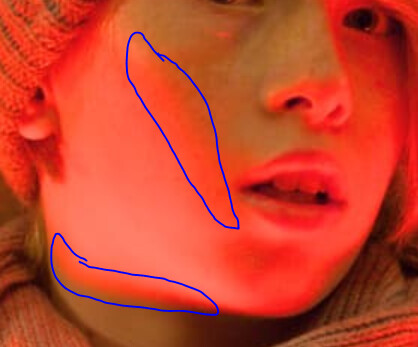
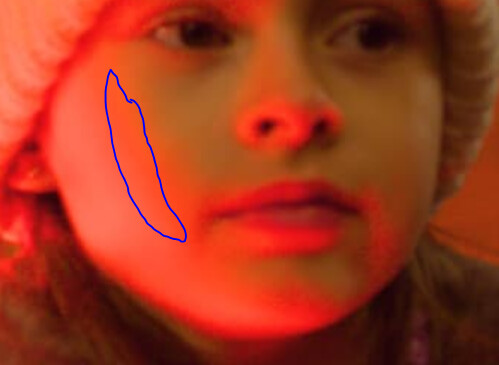
I am wondering if they are similar to what Alex Forsythe pointed out a month ago as Mach bands in the diver image. For the past week or so, I haven´t stopped thinking about Christopher´s sentence :
We don’t absolutely need to know how the human visual system works. We only really need to know how to make pictures work!
And I think he is right on. Since none of us were present in the blue bar or red xmas shoot, maybe we could focus more on the picture´s quality and less on the scene and “what our eyes saw” ? And to me one of the most important aspects of a picture is the smooth tonality. So what are those kinks from ? Are they similar to the ones present in those ramps ?
And what is happening in those screenshots of blue bar I shared in my last message ? Is there some kind of threshold (g0 ? brilliance ?) that makes these areas look “wrong” ?
My tuppence,
Chris
Might be helpful to look at how these things appear in RED IPP2 and ARRI Reveal as a point of comparison.
ARRI Reveal would be interesting to look at because beyond the Output/Display transform there’s also some transformation done as part of ACE4 (Arri Color Engine 4) to handle clipping of certain colors, like blues. I wonder if it’s similar to the reference gamut compression?
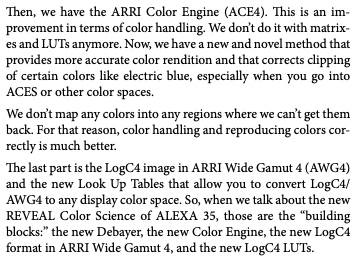
Source: https://www.fdtimes.com/pdfs/free/115FDTimes-June2022-2.04-150.pdf
Posting some comparisons of CAM DRT v35 and ARRI Reveal.
RED
In this first one I’m noticing that the reds in the CAM DRT seem more “lit” and “punchy” (I think this has always been the case with ACES and reds). The red on the Sunkist raisin box in ARRI Reveal looks more true to life to me.
Same could be said for the orange jump suits on these astronauts.
which brings us to how this impacts skin.
Red in these swatches appears more magenta in the CAM DRT than in the ARRI Reveal, and goes quicker to white (AKA pink) while the ARRI Reveal holds the red longer.
Finally for red we of course need to see Red Christmas
BLUE
Now some observations about blue.
Looking again at the blues in the color chart in this still life, and comparing this to the blues in the color chart in my hand, I’d say the CAM DRT looks closer to what I see.
However the blue in these swatches in CAM DRT seems to be going a bit magenta.
also here in the blue screen
note blue here, including on the woman’s face. Going magenta in CAM DRT.
The ARRI Reveal appears to lift the blue a bit, compared to CAM DRT. For example on the blue glass on the table in this image
or on the blue bottle here
and of course Blue Bar
Hope that’s useful.
Let me add one more comparison. Compare the red and blue spheres, which illustrates many of the things I noted above.
In addition you can see here in the dragon that the ARRI Reveal appears to be desaturating darker colors. At least that’s what I believe is happening. I feel I see that on this fruit still life, which gives it that “filmic” look. I suppose one could argue this might be more appropriate in an LMT.
Following on from what @priikone said last meeting, it is fairly simple to make it so the compression slope gets steeper instead of shallower as the cusp gets more saturated. This Desmos simply changes the expression for the slope control variable to:
\;\;\;\;g=\frac{50J_{max}G_{dist}}{M_{cusp}}
instead of:
\;\;\;\;g=G_{dist}M_{cusp}
Since g is effectively a constant in the equations, the quadratic solve still works exactly as it did before (I was initially worried I would have to redo that maths, and it might break!)
The factor of 50 and J_{max} (Hellwig J value for display peak) are to get the resulting values back up into the same kind of range as they were previously, and also scale with the larger cusp M values in HDR.
This did make me think about what happens currently in HDR. Because M_{cusp} is larger for HDR, g currently ends up larger. So the slope may be steeper in HDR. Of course the whole cusp is larger in HDR, so I’m not sure what the net effect actually is. It certainly merits consideration.
I think it’s interesting to see that ARRI Reveal shows quite more (perceived) noise in the frame labeled 050 and CAM DRT v035 is much cleaner in the bottom end. Too clean perhaps? The odd thing about CAM DRT v035’s rendering is that the table and other black objects look much more magenta-ish where on Reveal it’s quite neutral.
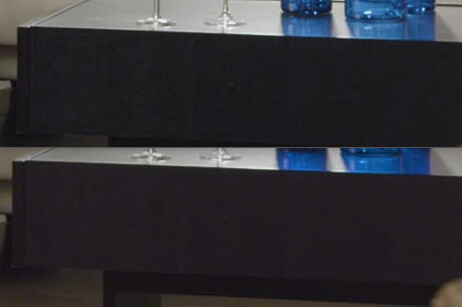
On closer look it seems to me that ARRI Reveal is rendering darks a bit darker making the color difference less noticeable resulting in less of a cast. Here I took a look at it with two other renderings. I used v034 because I didn’t install v035 yet but I don’t think the rendering changed there in that regard? In any case I do like how CAM DRT is rendering the bottom end.
(images were scaled up for comparison, not 1:1 pixel)
Derek, have you also compared ARRI Reveal with CAM DRT v35 in HDR? If so, are the comparisons similar in their differences between SDR and HDR, or what are the differences?
Also, does ARRI Reveal only work with ARRI Wide or can it be applied to DaVinci Wide from Braw? And where did you get ARRI Reveal to apply to the sample frames? The ALEXA 35 Supporting Tools & Software page indicates that Reveal is supported in DaVinci.
Shebbe, I am glad you are looking at comparing various ‘renderings.’ Same questions.
Thanks
What I did for comparing was using ARRI’s AWG4/LogC4 to Rec.709 conversion LUT with a pre-conversion for the ACES exrs to LogC4. I’d imagine you could do the same for .braw files in that regard.
I quickly implemented this and have been looking at some images. I would say it works well, and in some respects perhaps better than the previous one. It visibly lightens gamut mapped blues and magentas, but I don’t consider it any real improvement when it comes to issues with blue, just a lighter mapping.
It does desaturate mapped yellows faster than before, and perhaps a tad too fast (in comparison to older versions, or in comparison to ARRI Reveal), which I think happens because darker yellows get projected with shallower (or more upward) angle now.
But the interesting question will be whether this makes the SDR appearance match closer with different gamuts when it comes to images like the ARRI bar image.
There is of course infinite possible variation within this approach. The simple inversion I have done means that as well as steepness changing between gamuts, depending on the M value of their cusps, the change of steepness within an individual gamut happens in the opposite direction. So the slope is steeper for hues with larger cusp M values, whereas previously it was shallower for them.
This would explain the yellow behaviour you describe, and if it is not desirable we could try something different.
For example, we could still multiply by the cusp M value, as we did before, but divide by an M value which is a single global value for the gamut. Perhaps something like the M value of the green primary, for example. You would then need an appropriate multiplier to get things back to the previous order of magnitude, and may or may not need to include J_{max}.
Indeed, and this is all good work, Nick. I think it’s good to get more control for the gamut mapper and especially for the projection. I’ve felt that there isn’t enough control at the moment. For the yellow with the high cusp, and similarly for cyan, it’s not far and probably small adjustment is going to make visible difference. And with more control we can probably get the matches between different gamuts closer as well.
ARRI Reveal looks great, but it also has a look built in. Their colors match the old transforms really well, they seem to have a built in look for skin tones, and they do interesting stuff in shadows. CAM DRT has more saturated reds and probably overall a bit more saturated look out of the box. If people prefer less saturated look for CAM DRT that is an easy adjustment to make. Personally I would lower the saturation a bit. The other things, like darker red, darker green, lighter blue, they can be done in LMT.
Here’s CAM DRT v035 with a simple LMT with HSV adjustment for blue hue and value:
And here’s CAM DRT v034 with the alternative compress mode and an LMT for the blue:
And ARRI Reveal:
No one asked, but
A bit of info regarding how DaVinci DRT works:
It uses per-channel tone mapping. But flare compensation (which, in DaVinci DRT, is most likely identical to rec709 EOTF linear segment near black) is undone after tone mapping and prior to primaries conversion, and then added after again. Unlike, for example, K1S1 where linearization of the tone-mapped image is done by using display EOTF (gamma 2.4 for example), keeping flare compensation unchanged at the input to the matrix multiplication.
Some thoughts I have:
- I think the current saturation is great, but slightly less saturation as a starting point wouldn’t be that offensive to me if that’s what the majority would want.
- The v035 with LMT for blue example looks very good to me. It solves the harsh splotches seen on the blue lit wall and ceiling but retains more brightness information compared to the v034 example or ARRI Reveal. To me that looks like a good middle ground to aim for. I can’t pull up the HDR version right now but from memory it would be a better match with that as well.
About the LMTs… I sometimes hear it brought up as possible options to provide different renderings shipping with ACES2.0, is that correct?
To me the example you showed should be part of the rendering already. It would be interesting to have several ‘technical’ looks but if I have to look a it practically, how easy will tracking different rendering choices really be? Most software with OCIO support don’t have good ways to select OCIOLooks from the viewer so you’d have to do custom OCIO setups. The only one I know of that does have it is Blender. BMD, Filmlight SGO etc. can obviously implement it in their native software environment but it gets trickier outside the grading/finishing area right?
I’m not involved with big productions so maybe my vision is totally warped… but if an LMT in a project becomes part of the look a colorist might do, doesn’t it already become part of the creative vision for that project? So what would be the point of having it as an option for ACES’ rendering itself?
I guess what I’m trying to say is that I feel that if ACES2.0 would provide LMTs they should only be really creative looks and not a mechanism to alter the rendering of ACES itself. With really creative looks everyone can be more aware that it has a creative purpose and (depending on the look) it’s also very likely to spot whether such a look is applied on the image or not anywhere in the pipeline.
And maybe the more important question. If there is a need to provide ‘technical’ LMTs for ACES2.0. Wouldn’t that mean we’re not happy enough with the default rendering?
I hope that made any sense.![]()
The K1S1 in fact does not use a simple power function but "something that approximates the power function with a limited slope around 0 ", as described by @hbrendel in this post.
Oddly I have two versions of the K1S1 LUT with different curves.
One labeled Classic from the Arri LogC3 LUT packages found here
Another one labeled K1S1 that I believe I got from either Nuke or possibly the old LUT generator. I think Resolve includes this one as well.
Yes I have. I observe the same differences in HDR as I do in SDR.
I did it in Nuke, so I’m afraid I wont be much help with Davinci!
